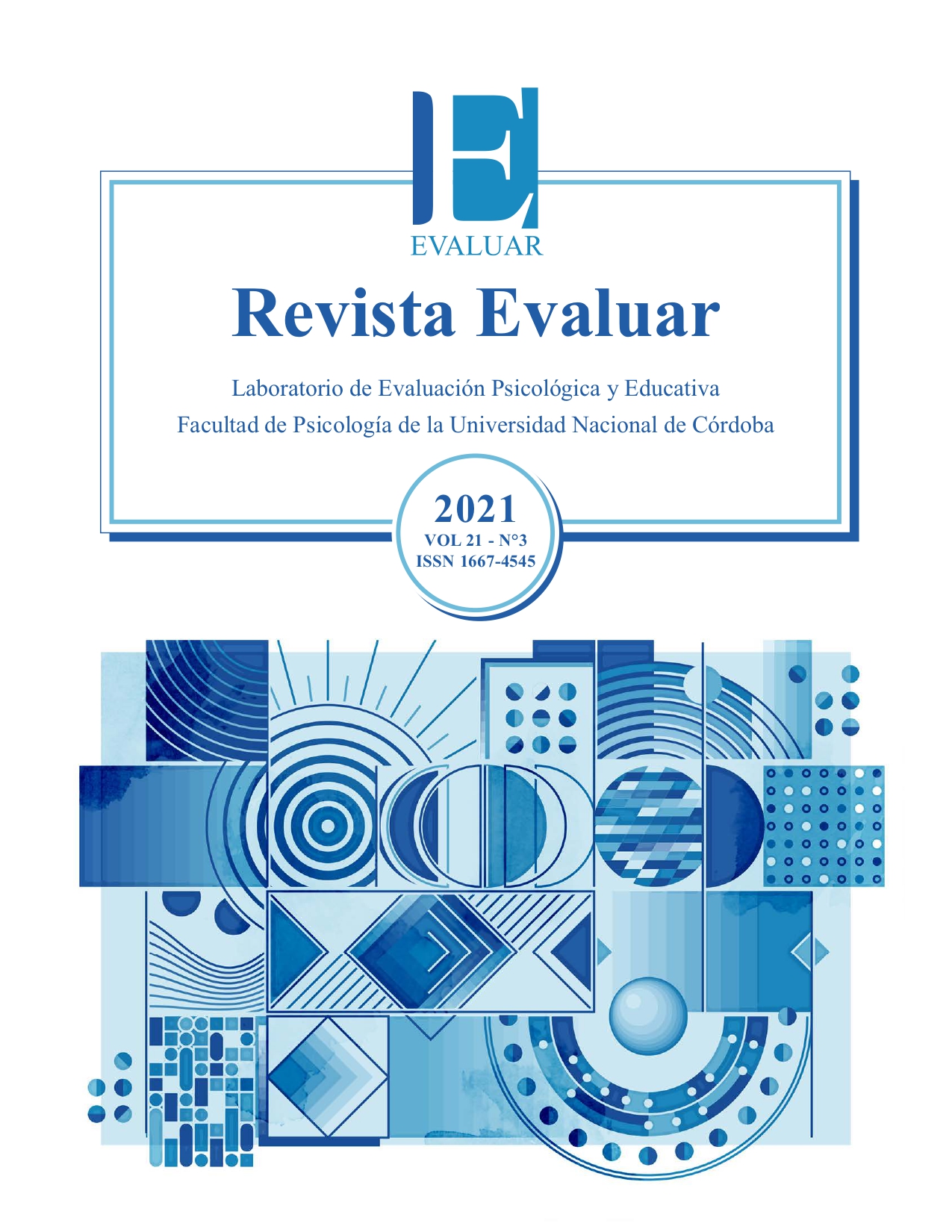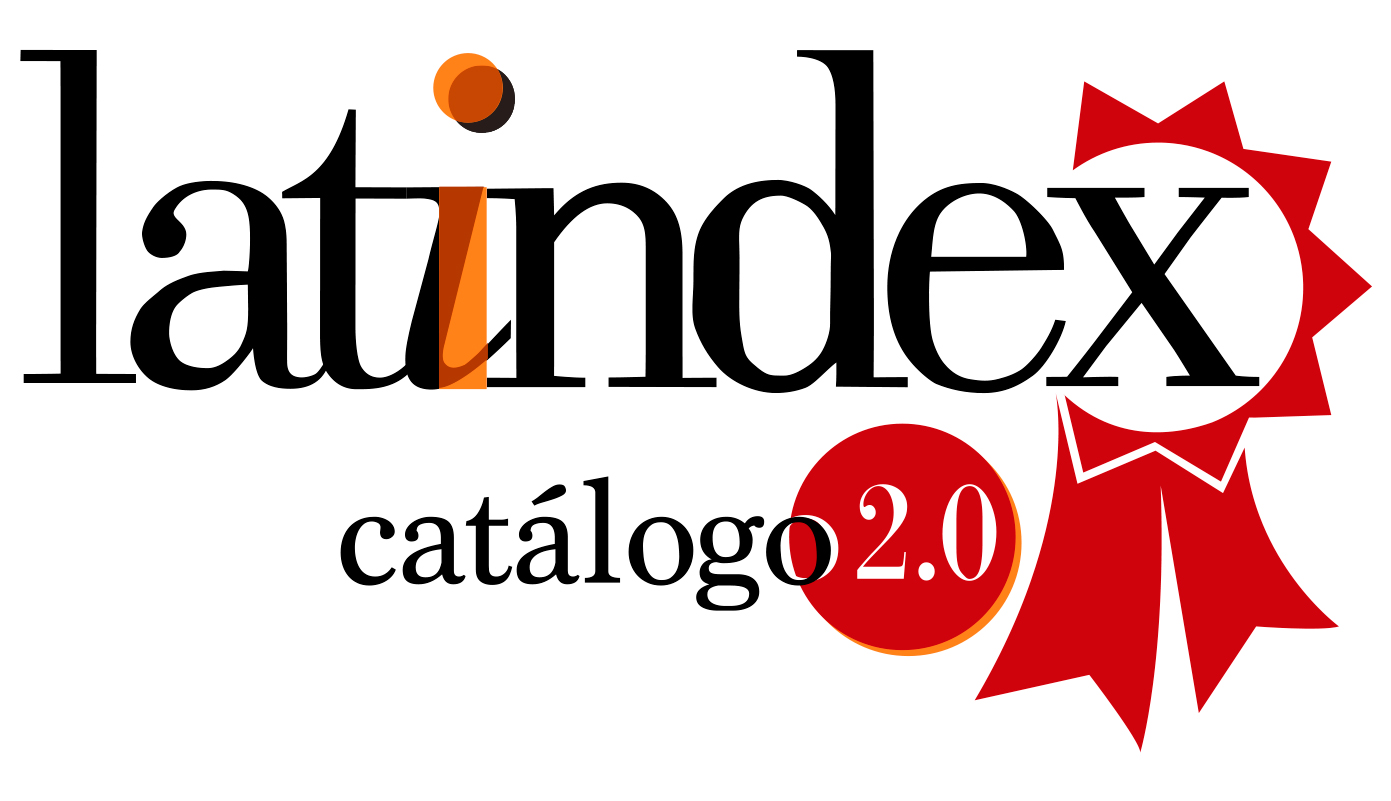The Psychometric Properties of Dispositional Flow Scale-2 in Video Games
DOI:
https://doi.org/10.35670/1667-4545.v21.n3.36307Keywords:
exploratory factor analysis, confirmatory factor analysis, convergent validity, discriminant validity, Mexican students, flow state, video gamesAbstract
The state of flow is an important psychological characteristic of educational video games design and evaluation. This study analyzed a Mexican adaptation of the Dispositional Flow Scale-2 psychometric properties in the use of video games. Based on the information provided by a sample of 312 students, aged 16 to 34 years (M = 19.90, SD = 2.73), from a university in northeastern Mexico a confirmatory factor analysis that suggested an acceptable fit of the factorial structure, adequate convergent validity but poor discriminant validity was performed. Based on an exploratory factor analysis a re-specified model was identified, grouping 33 of the 36 items of the scale. This factorial structure, which showed an acceptable fit, adequate convergent validity and discriminant validity, suggests that scale dimensions can be grouped into antecedents and consequences of flow.
Downloads
References
Bittencourt, I. I., Freires, L., Lu, Y., Challco, G. C., Fernandes, S., Coelho, J., ... & Isotani, S. (2021). Validation and psychometric properties of the Brazilian-Portuguese dispositional Flow Scale 2 (DFS-BR). PLoS ONE 16(7), e0253044. doi: 10.1371/journal.pone.0253044
Brockmyer, J. H., Fox, C. M., Curtiss, K. A., McBroom, E., Burkhart, K. M., & Pidruzny, J. N. (2009). The development of the Game Engagement Questionnaire: A measure of engagement in video game-playing. Journal of Experimental Social Psychology, 45(4), 624-634. doi: 10.1016/j.jesp.2009.02.016
Calero, A., & Injoque-Ricle, I. (2013). Propiedades psicométricas del Inventario Breve de Experiencias Óptimas (Flow). Revista Evaluar, 13(1), 40-55. doi: 10.35670/1667-4545.v13.n1.6796
Chung, C. H., Shen, C., & Qiu, Y. Z. (2019). Students’ acceptance of gamification in Higher Education. International Journal of Game-Based Learning, 9(2), 1-19. doi: 10.4018/IJGBL.2019040101
Costello, A. B., & Osborne, J. (2005). Best practices in exploratory factor analysis: Four recommendations for getting the most from your analysis. Practical Assessment, Research, and Evaluation, 10, Article 7. doi: 10.7275/jyj1-4868
Csikszentmihalyi, M. (1975). Beyond boredom and anxiety. San Francisco, CA: Jossey-Bass.
Csikszentmihalyi, M. (2014). Play and intrinsic rewards. En M. Csikszentmihalyi (Ed.), Flow and the foundations of positive psychology. The collected works of Mihaly Csikszentmihalyi (pp. 135-154). Nueva York, NY: Springer. doi: 10.1007/978-94-017-9088-8
Domínguez, A., Saenz de Navarrete, J., de Marcos, L., Fernández-Sanz, L., Pagés, C., & Martínez-Herráiz, J. J. (2013). Gamifying learning experiences: Practical implications and outcomes. Computers & Education, 63, 380-392. doi: 10.1016/j.compedu.2012.12.020
Erhel, S., & Jamet, E. (2019). Improving instructions in educational computer games: Exploring the relations between goal specificity, flow experience and learning outcomes. Computers in Human Behavior, 91, 106-114. doi: 10.1016/j.chb.2018.09.020
Farrel, A. M. (2010). Insufficient discriminant validity: A comment on Bove, Pervan, Beatty, and Shiu (2009). Journal of Business Research, 63(3), 324-327. doi: 10.1016/j.jbusres.2009.05.003
Fornell, C., & Larcker, D. F. (1981). Evaluating structural equation models with unobservable variables and measurement error. Journal of Marketing Research, 18(1), 39-50. doi: 10.1177/002224378101800104
Fu, F. -L., Su, R. -C., & Yu, S. -C. (2009). EGameFlow: A scale to measure learners’ enjoyment of e-learning games. Computers & Education, 52(1), 101-112. doi: 10.1016/j.compedu.2008.07.004
García-Calvo, T., Jiménez-Castuera, R., Santos-Rosa-Ruano, F. J., Reina-Vaíllo, R., & Cervelló-Gimeno, E. (2008). Psychometric properties of the Spanish version of the Flow State Scale. The Spanish Journal of Psychology, 11(2), 660-669. doi: 10.1017/s1138741600004662
Giasiranis, S., & Sofos, L. (2017). Flow experience and educational effectiveness of teaching informatics using AR. Educational Technology & Society, 20(4), 78-88. Recuperado de http://www.jstor.org
Gonzalez, C. (Ed.). (2013). Student usability in educational software and games: Improving experiences. Hershey, PA: IGI Global. doi: 10.4018/978-1-4666-1987-6
Gutierrez, J. P. (2021). Do game transfer phenomena lead to flow? An investigation of in-game and out-game immersion among MOBA gamers. Computers in Human Behavior Reports, 3, Article 100079. doi: 10.1016/j.chbr.2021.100079
Hair, J. F., Black, W. C., Babin, B. J., & Anderson, R. E. (2014). Multivariate data analysis (7a ed.). Harlow, Reino Unido: Pearson Education Limited.
Hamari, J., & Koivisto, J. (2014). Measuring flow in gamification: Dispositional Flow Scale-2. Computers in Human Behavior, 40, 133-143. doi: 10.1016/j.chb.2014.07.048
Hassan, L., Jylhä, H., Sjöblom, M., & Hamari, J. (2020). Flow in VR: A study on the relationships between preconditions, experience and continued use. Proceedings of the 53rd Hawaii International Conference on System Sciences (pp. 1196-1205). doi: 10.24251/HICSS.2020.149
Hu, L. -T., & Bentler, P. M. (1999). Cutoff criteria for fit indexes in covariance structure analysis: Conventional criteria versus new alternatives. Structural Equation Modeling: A Multidisciplinary Journal, 6(1), 1-55. doi: 10.1080/10705519909540118
Hwang, G. -J., Chiu, L. -Y., & Chen, C. -H. (2015). A contextual game-based learning approach to improving students´ inquiry-based learning performance in social studies courses. Computers & Education, 81, 13-25. doi: 10.1016/j.compedu.2014.09.006
Jackson, S. A., & Eklund, R. C. (2002). Assessing flow in physical activity: The Flow State Scale-2 and Dispositional Flow Scale-2. Journal of Sport & Exercise Psychology, 24(2), 133-150. doi: 10.1123/jsep.24.2.133
Jackson, S. A., Eklund R. C., & Martin, A. J. (23 de junio de 2020). Flow Scales. Mind Garden. Recuperado de https://www.mindgarden.com/100-flow-scales
Jackson, S. A., & Marsh, H. W. (1996). Development and validation of a scale to measure optimal experience: The Flow State Scale. Journal of Sport & Exercise Psychology, 18(1), 17-35. doi: 10.1123/jsep.18.1.17
Joo, Y. J., Oh, E., & Kim, S. M. (2015). Motivation, instructional design, flow, and academic achievement at a Korean online university: A structural equation modeling study. Journal of Computing in Higher Education, 27(1), 28-46. doi: 10.1007/s12528-015-9090-9
Khoshnoud, S., Alvarez-Igarzábal, F., & Wittmann, M. (2020). Peripheral-physiological and neural correlates of the flow experience while playing video games: A comprehensive review. PeerJ, 8, e10520. doi: 10.7717/peerj.10520
Kiili, K., de Freitas, S., Arnab, S., & Lainema, T. (2012). The design principles for flow experience in educational games. Procedia Computer Science, 15, 78-91. doi: 10.1016/j.procs.2012.10.060
Kiili, K., & Lainema, T. (2008). Foundation for measuring engagement in educational games. Journal of Interactive Learning Research, 19(3), 469-488. Recuperado de https://www.learntechlib.org
Kline, R. B. (2011). Principles and practice of structural equation modeling (3a ed.). New York, NY: The Guilford Press.
Marinho, A., Oliveira, W., Bittencourt, I. I., & Dermeval, D. (2019). Does gamification improve flow experience in classroom? An analysis of gamer types in collaborative and competitive settings. Brazilian Journal of Computers in Education (Revista Brasileira de Informática na Educação - RBIE), 27(2), 40-68. doi: 10.5753/RBIE.2019.27.02.40
Mesurado, B. (2010). La experiencia de flow o experiencia óptima en el ámbito educativo. Revista Latinoamericana de Psicología, 42(2), 183-192. Recuperado de http://revistalatinoamericanadepsicologia.konradlorenz.edu.co
Montes-González, J. A., Ochoa-Angrino, S., Baldeón-Padilla, D. S., & Bonilla-Sáenz, M. (2018). Videojuegos educativos y pensamiento científico: Análisis a partir de los componentes cognitivos, metacognitivos y motivacionales. Educación y Educadores, 21(3), 388-408. doi: 10.5294/edu.2018.21.3.2
Moral de la Rubia, J. (2019). Revisión de los criterios para validez convergente estimada a través de la Varianza Media Extraída. Psychologia, 13(2), 25-41. doi: 10.21500/19002386.4119
Prensky, M. (2001). Digital game-based learning. New York, NY: McGraw-Hill.
Procci, K., Singer, A. R., Levy, K. R., & Bowers, C. (2012). Measuring the flow experience of gamers: An evaluation of the DFS-2. Computers in Human Behavior, 28(6), 2306-2312. doi: 10.1016/j.chb.2012.06.039
Revelle, W. (2021). psych: Procedures for psychological, psychometric, and personality research (R package 2.1.9). [Software de cómputo]. Recuperado de https://CRAN.R-project.org/package=psych
Rijavec, M., Ljubin-Golub, T., Jurčec, L., & Olčar, D. (2017). Working part-time during studies: The role of flow in students’ well-being and academic achievement. Croatian Journal of Education, 19. doi: 10.15516/cje.v19i0.2724
Riva, E. F. M., Riva, G., Talò, C., Boffi, M., Rainisio, N., Pola, L., ... & Inghilleri, P. (2017). Measuring dispositional flow: Validity and reliability of the Dispositional Flow State Scale 2, Italian version. PLoS ONE, 12(9), e0182201. doi: 10.1371/journal.pone.0182201
Rodríguez-Ardura, I., & Meseguer-Artola, A. (2017). Flow in e-learning: What drives it and why it matters. British Journal of Educational Technology, 48(4), 899-915. doi: 10.1111/bjet.12480
Rosseel, Y. (2012). lavaan: An R package for structural equation modeling. Journal of Statistical Software, 48(2), 1-36. doi: 10.18637/jss.v048.i02
Satorra, A., & Bentler, P. M. (1994). Correction to test statistics and standard errors in covariance structure analysis. En A. von Eye & C. C. Clogg (Eds.), Latent variable analysis: Applications for developmental research (pp. 399-419). Thousand Oaks, CA: Sage.
Shu-Hui, C., Wann-Yih, W., & Dennison, J. (2018). Validation of EGameFlow: A self-report scale for measuring user experience in video game play. Computers in Entertainment, 16(3), 1-15. doi: 10.1145/3238249
Stavrou, N. A., & Zervas, Y. (2004). Confirmatory factor analysis of the flow state scale in sports. International Journal of Sport and Exercise Psychology, 2(2), 161-181. doi: 10.1080/1612197X.2004.9671739
Swann, C., Crust, L., & Vella, S. A. (2017). New directions in the psychology of optimal performance in sport:Flow and clutch states. Current Opinion in Psychology, 16, 48-53. doi: 10.1016/j.copsyc.2017.03.032
Tabachnick, B. G., & Fidell, L. S. (2013). Using multivariate statistics (6a ed.). Upper Saddle River, NJ: Pearson. Taber, K. S. (2018). The use of Cronbach’s Alpha when developing and reporting research instruments in science education. Research in Science Education, 48(6), 1273-1296. doi: 10.1007/s11165-016-9602-2
Wang, C. K. J., Liu, W. C., & Khoo, A. (2009). The psychometric properties of Dispositional Flow Scale-2 in internet gaming. Current Psychology, 28(3), 194-201. doi: 10.1007/s12144-009-9058-x
Downloads
Published
How to Cite
Issue
Section
License
Copyright (c) 2021 Raúl Rodríguez-Antonio, Jair Arody del Valle López

This work is licensed under a Creative Commons Attribution 4.0 International License.
Revista Evaluar aplica la Licencia Internacional de Atribuciones Comunes Creativas (Creative Commons Attribution License, CCAL). Bajo esta licencia, los autores retienen la propiedad de copyright de los artículos pero permiten que, sin que medie permiso de autor o editor, cualquier persona descargue y distribuya los artículos publicados en Evaluar. La única condición es que siempre y en todos los casos se cite a los autores y a la fuente original de publicación (i.e. Evaluar). El envío de artículos a Evaluar y la lectura de los mismos es totalmente gratuito.




_(3).jpg)



.jpg)



